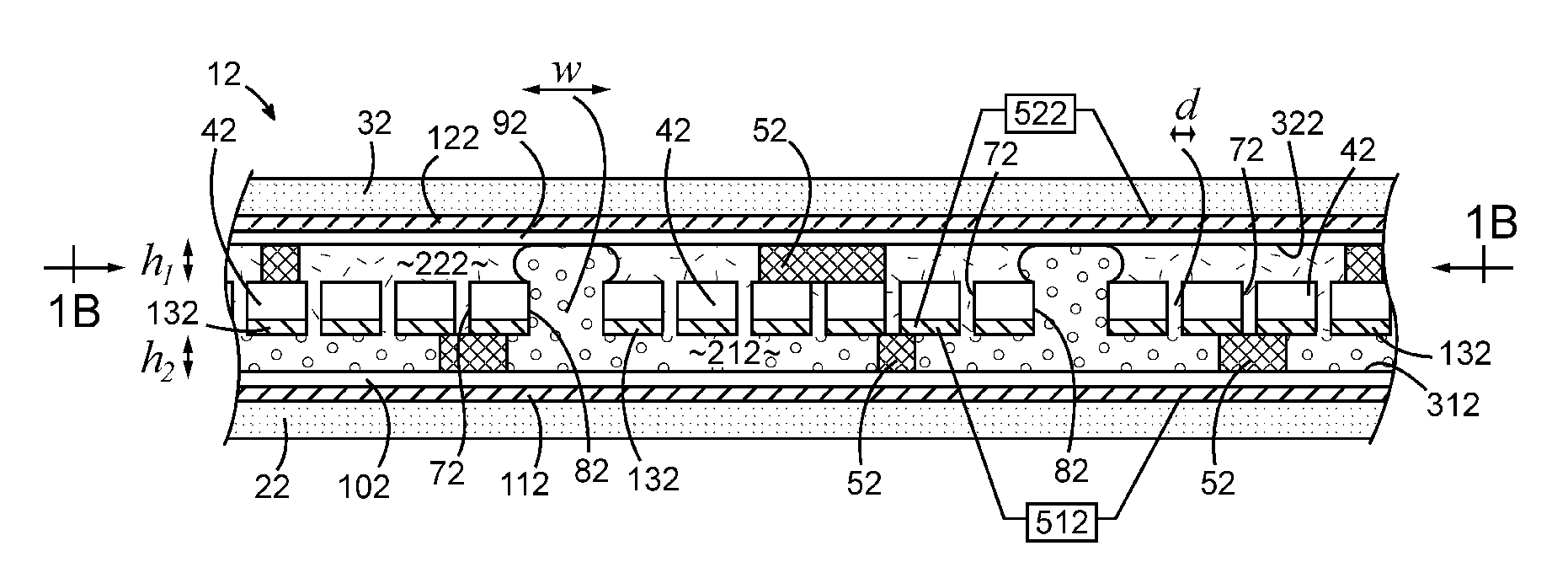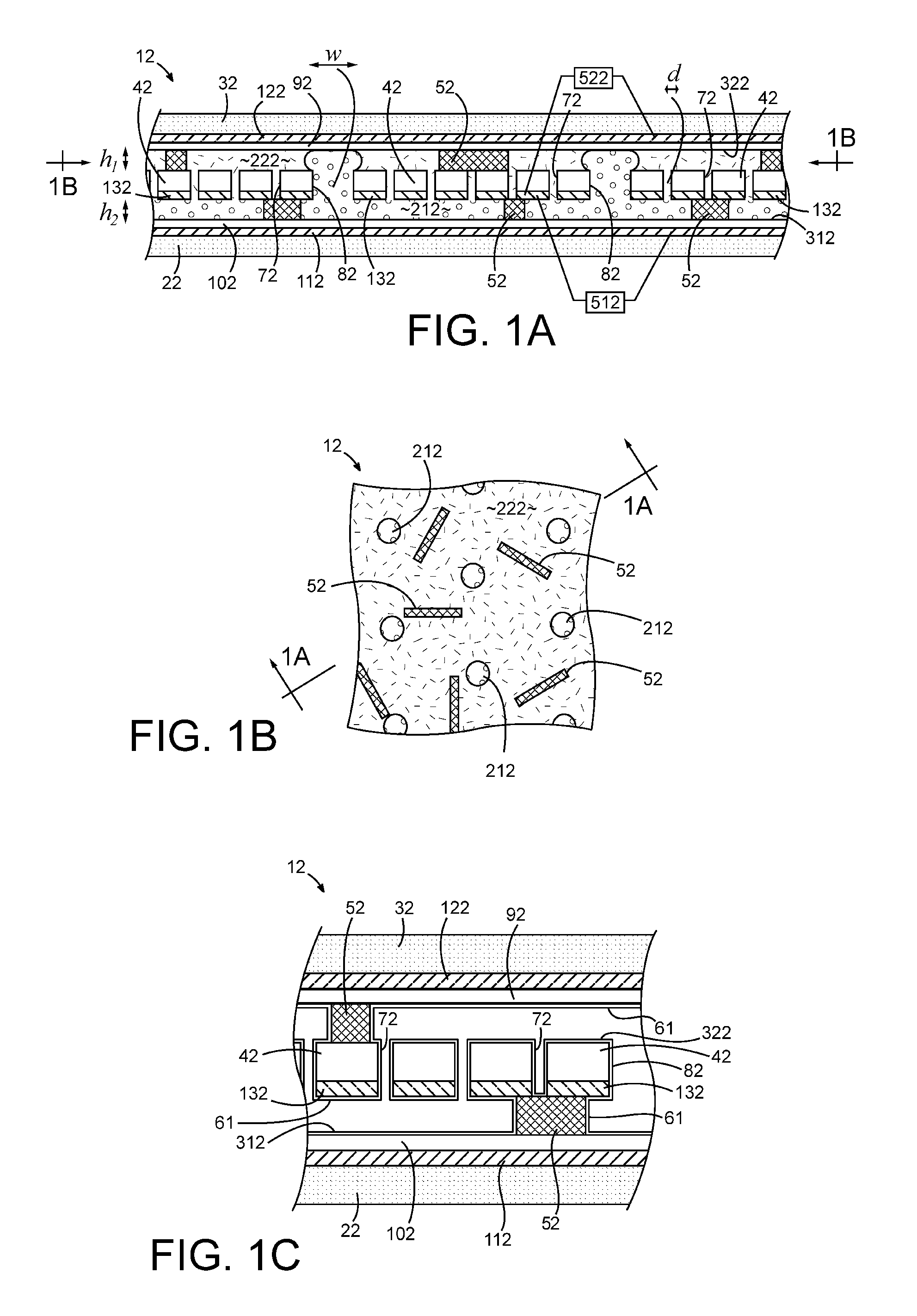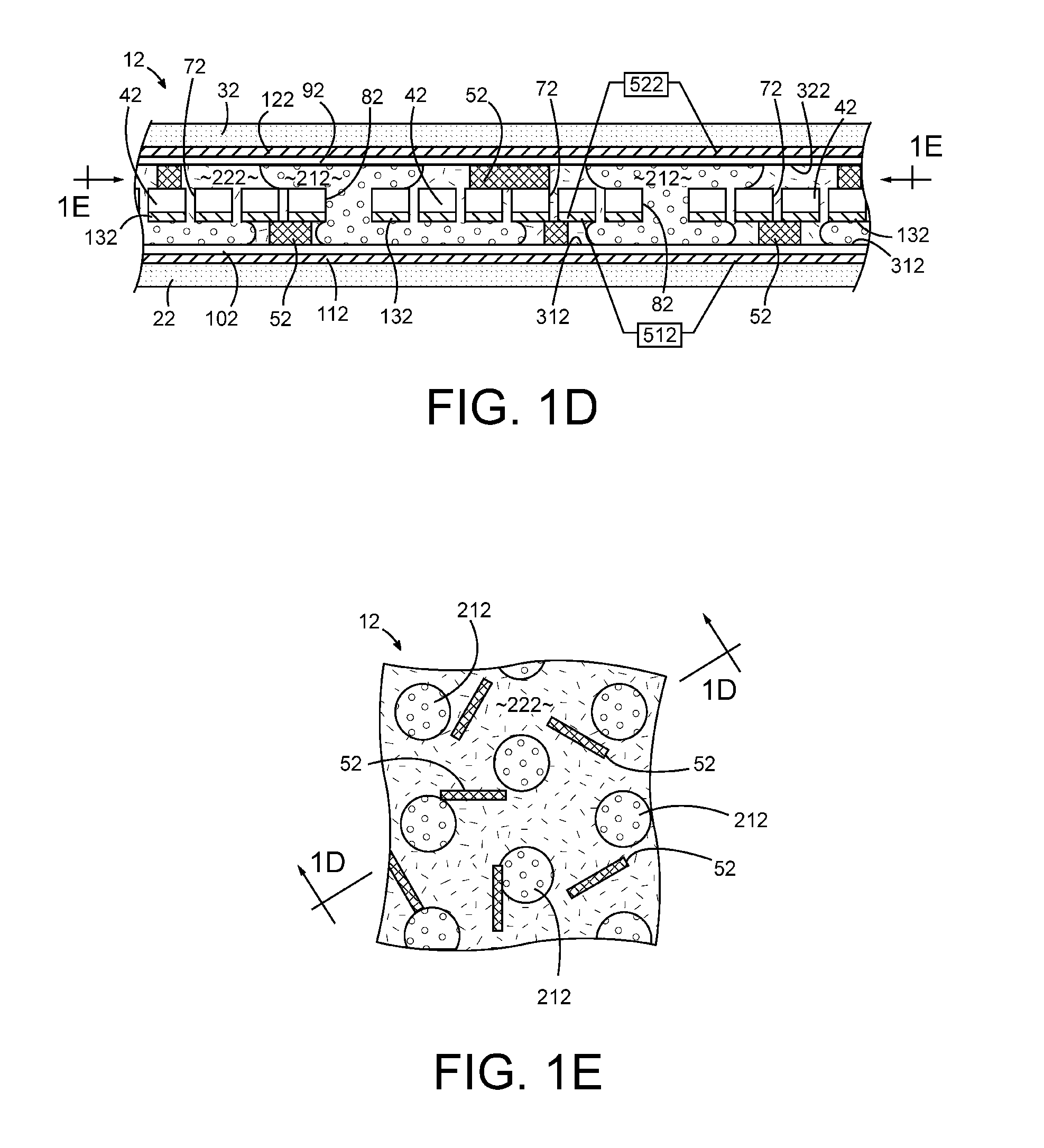Electrofluidic imaging film, devices, and displays, and methods of making and using the same
a technology of electro-fluidic imaging and film, applied in the field of electro-fluidic, can solve the problems of reducing affecting the optical performance of the display, so as to reduce or eliminate the need for precise electrode alignment, simple fabrication methods, and the effect of eliminating the optical loss associated with pixel border features
- Summary
- Abstract
- Description
- Claims
- Application Information
AI Technical Summary
Benefits of technology
Problems solved by technology
Method used
Image
Examples
example 1
[0082]The display performance with respect to the various embodiments of the present invention may be calculated for pixel densities ranging from about 1 pixel-per-inch (“PPI”) to about 1000 PPI. A review of performance requirements for devices is provided in J. HEIKENFELD, et al., “A critical review of the present and future prospects for electronic paper,”J. Soc. Inform. Display. 19(2):129-156 (2011). Table 1 includes calculations made using proven models for electrofluidic transport, including light outcoupling losses, and are benchmarked off actual data measured for 25 PPI pixels (see Example 3). It is clear that various devices in accordance with one or more embodiments of the present invention may satisfy bill-board application pixel resolutions (1 PPI) and speeds (300 PPI) where video rate (<20 ms) speed is required.
[0083]In terms of optical performance, several comparisons may be made. Firstly, the present invention is nearly twice as reflective as the E INK (E Ink Co., Camb...
example 2
[0084]Two display devices were fabricated in a manner as described in S. YANG, et al., “High reflectivity electrofluidic pixels with zero-power grayscale operation,”Appl. Phys. Lett. 97(14): 143501-143503 (2010).
[0085]The first device was fabricated in the exact same manner described in the reference, but without spacers in the upper channel. When tested, the polar fluid merged between pixels in the upper channel and could not be returned to the lower channel. The merging and degradation of the display device worsened over time.
[0086]The second device was fabricated in the exact same manner described in the publication, but without aligning the channels to the segmented electrodes on the lower substrate. Pixels partially spanning the edges of the segmented electrodes only partially operated or failed to operate because of the lack of alignment with a complete electrode.
example 3
[0087]Devices were fabricated from multiple 6 inch polycarbonate porous films, which were obtained from Structure Probe, Inc. (West Chester, Pa.) with small 10 μm diameter pores and a pore density of 8×105 per square inch. A low cost CO2 laser-engraving machine was then used to mill into the film an array of larger 100 μm pores in a hexagonal lattice having a lattice constant of about 500 μm. This porous film was then sputter coated with about 100 nm of reflective and conductive Al. The film was then dip-coated in diluted Cytonix 1601V fluoropolymer solution and baked at 50° C. to form a 50 nm thick non-electrically-insulating hydrophobic coating. One of two 6 inch glass substrates was patterned with various segmented and transparent In2O3:SnO2 electrode test patterns, patterned with 50 μm thick and 200 μm long spacers, insulated with 1 μm of Parylene C dielectric, and similarly coated with fluoropolymer. The other one of the two 6 inch glass substrates was formed in a manner simila...
PUM
| Property | Measurement | Unit |
|---|---|---|
| thickness | aaaaa | aaaaa |
| Young's wetting angle | aaaaa | aaaaa |
| AC voltage | aaaaa | aaaaa |
Abstract
Description
Claims
Application Information
 Login to View More
Login to View More - R&D
- Intellectual Property
- Life Sciences
- Materials
- Tech Scout
- Unparalleled Data Quality
- Higher Quality Content
- 60% Fewer Hallucinations
Browse by: Latest US Patents, China's latest patents, Technical Efficacy Thesaurus, Application Domain, Technology Topic, Popular Technical Reports.
© 2025 PatSnap. All rights reserved.Legal|Privacy policy|Modern Slavery Act Transparency Statement|Sitemap|About US| Contact US: help@patsnap.com



